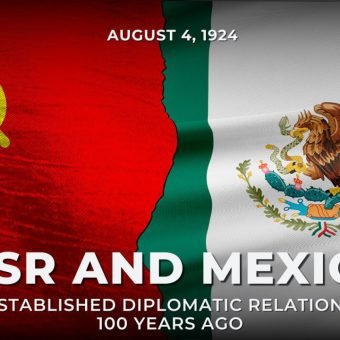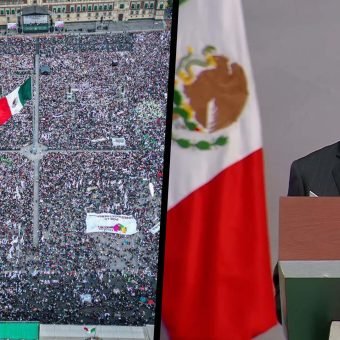The New Silk Road of the Americas: China/Mexico’s Bold Move in Manzanillo, Mexico – quietly diversifying
While Trump and Washington obsess over reclaiming the Panama Canal and militarizing trade routes, Beijing is quietly rewriting the rules of hemispheric commerce. Welcome to the Port of Manzanillo, Mexico’s rising giant on the Pacific, a cornerstone of China’s strategic vision for the Americas.
With COSCO Shipping’s direct routes and an $8 billion expansion project underway, Manzanillo is poised to become the Western Hemisphere’s logistics hub, connecting the booming Asia-Pacific supply chain with Latin American markets. Grain, chemicals, minerals, auto parts, this port will see it all, bypassing the congested Panama bottleneck with speed and efficiency.
And here lies the masterstroke: while Washington relies on outdated Monroe Doctrine rhetoric and sanctions-heavy diplomacy, Beijing is building bridges, literally and figuratively. Mexico becomes a vital node in a multipolar trade network that binds Latin America closer to Asia’s manufacturing powerhouse. It’s not just about goods; it’s about geopolitics.
Manzanillo is more than a port, it’s a symbol of the shifting tide. As the U.S. watches nervously, clinging to its dwindling hegemony, the New Silk Road of the Americas is already paving the way for a future unshackled from unilateralism.
Take a look at this little clip – The Mindblowing story nobody is talking about.
The President of Mexico, Claudia Sheinbaum, launched the expansion of the port of Manzanillo, in November 2024, during the celebration of the Mexican Armed Forces Day.
The Mexican Naval Ministry (SEMAR) will oversee the $3 billion expansion. The project is expected to be completed in 2030. When completed, it would put Manzanillo in the ranks of the world’s top-15 container ports.
The Port of Manzanillo, Mexico’s primary container gateway on the Pacific Coast, will double its capacity to 10 million teu, up from the present 3.5 million teu capacity, making it the largest container port in Latin America, ahead of Panama’s transhipment hub in Colon and Brazil’s Santos Port from the top spots.
Mexican authorities said that they aim to develop the port sustainably and have conducted an environmental impact study that identified mitigation measures to reduce the project’s impact on the area.
The Nuevo Manzanillo project will transform Mexico’s largest port into a major international logistics hub as installations will be extended by 303% to cover 1,700 hectares, up from the present 450 hectares.
Mexico’s National Port System Administration, ASIPONA, said -in advance of President Sheinbaun’s visit- that the new port complex will have four container terminals, as well as piers for petroleum product handling.
While China is a significant trading partner, Manzanillo also imports from Japan, South Korea, the United States, and Latin American nations, highlighting its diversified trade network. Mexico is a centre of nearshoring with more than 18 automobile plants.
The project is funded through a mix of public and private investments, with interest from firms such as Ferromex, a Grupo Mexico Transportes railroad subsidiary.
Road and rail capacity issues have limited throughput at Manzanillo, and Mexico’s thriving manufacturing sector has been pushing for more investment in infrastructure to modernise the facility.












Ancient Craft
China’s and Mexico’s Bold Move: The Alliance That Could Shake The US Economy – youtube
https://www.youtube.com/watch?v=1S8MjjNX5BU
WoW! amarynth, is there also a high speed railway, & a supporting port on the gulf side?
There are ports, Vera Cruz and Progresso, but not major ports. There are good road criss crossing and it is not an extensive distance. I know, I’ve travelled them. Vera Cruz is as far as I know a port for fruit and soft things. Progresso is mostly a port for… Read more »
happy day! the high speed will be loverly! loverly!
dumpster’s like a pekinese chasing his swishy tail while the caravan moves on.